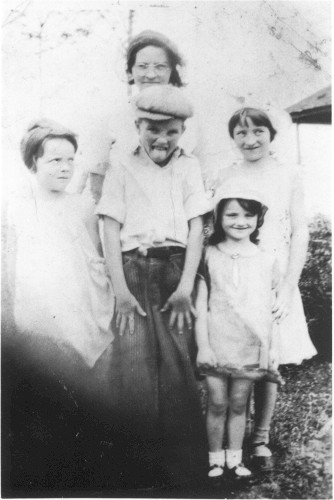
Front row: Jacke, Hurschel, Rose
Back row: Eula, Virginia
 Front row: Jacke, Hurschel, Rose Back row: Eula, Virginia |
Jacke was born in 1924 into a rural farming and mining community in Southern Illinois, among the hills along the Ohio River.
She grew up during the Great Depression, when a quarter of the population of the U.S. was out of work. Her father, Vevas Tucker, was a fluorspar miner and subsistence farmer, and her mother Eula raised the family of seven children in a 4-room house. Jacke attended one-room elementary schools and went to Cave-in-Rock High School.
She started drawing in early childhood.
During the Depression, her parents couldn't always afford art supplies.
Her talent was recognized by the age of six, and the rural route mail carrier
who had a steady paycheck brought her pencils, crayons, drawing tablets
and paint boxes. 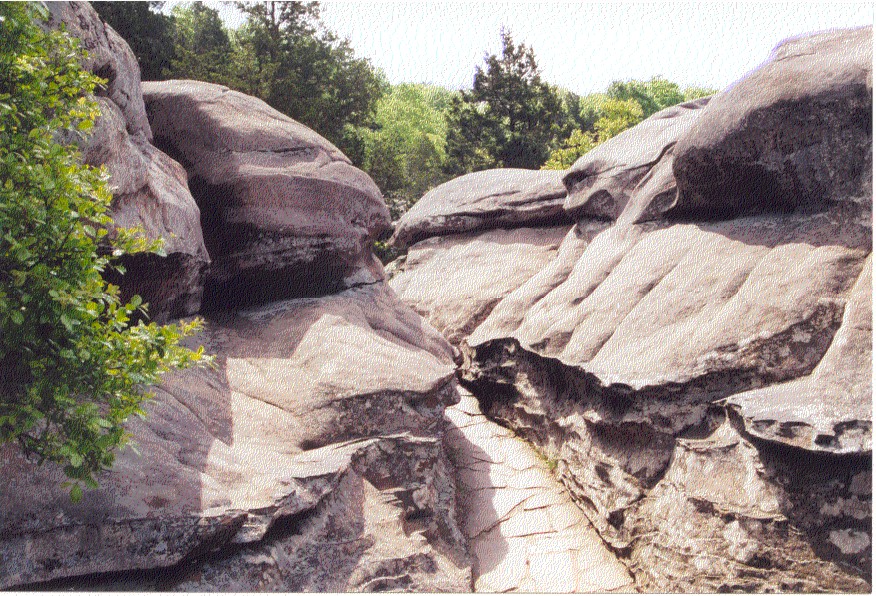
The poverty of her childhood was balanced by the rich natural beauty of Southern Illinois.
She grew up within walking distance of the High Knob, with its views of the surrounding area, and within walking distance of the incredible geological formations of the Devil's Backbone, now known as the Garden of the Gods and incorporated into the Shawnee National Forest.
All through her childhood years, Jacke made drawings and paintings, which she gave away or sold. She earned pocket money selling individually-painted postcards, making portraits, and giving illustrated talks to civic groups.
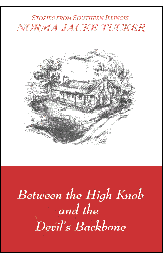
|
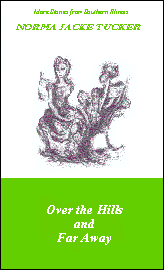
|
Jacke suffered from curvature of the spine as a child, and was treated at the Shriner's Hospital in St. Louis, Missouri, and later at the Illinois Research Hospital in Chicago.
The scenes from Jacke's childhood and school age years stayed with her for the rest of her life. The mule-drawn plows, the excitement of play-party dances, revival meetings, forest fires and family crises all provided material for her rich imagination.
Many of the stories are recorded in her
books, Between the High Knob and the Devil's Backbone: Stories from Southern
Illinois and Over the Hills and Far Away: More Stories from Southern
Illinois.
Jacke won a full scholarship to the University of Illinois in 1942 -- the first student from her county to do so. While she was at the University, she volunteered at the campus U.S.O. service center, and won an election as the most popular U.S.O. hostess in America.
With the award came publicity -- a full-length feature magazine article, speeches, an all-expenses tour of New York City, and a new wardrobe.
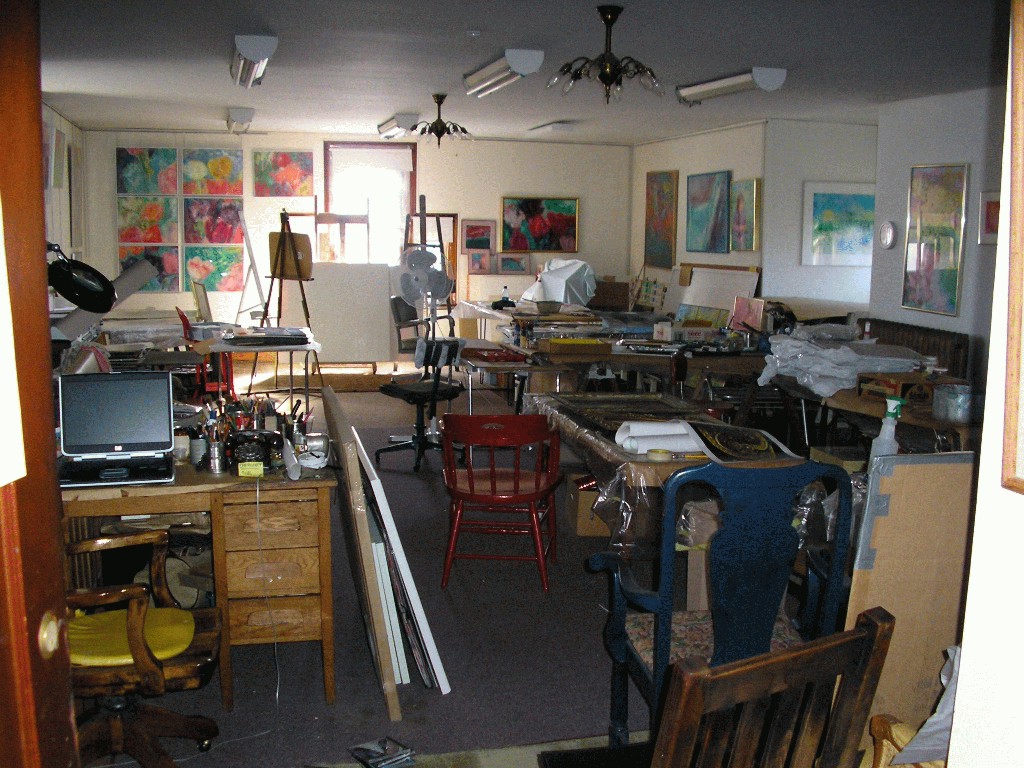 Jacke married attorney
Robert Leacy, who she met while he was a serviceman in training at the University
of Illinois. She moved from the isolated, rural home of her childhood to
the bustling, multi-ethnic community on the west side of Buffalo, NY, where
she taught for many years in the public schools.
Jacke married attorney
Robert Leacy, who she met while he was a serviceman in training at the University
of Illinois. She moved from the isolated, rural home of her childhood to
the bustling, multi-ethnic community on the west side of Buffalo, NY, where
she taught for many years in the public schools.
They bought a grand old mansion in
1964, and gradually restored it. One of the most special features of the
house is the enormous space on the third floor, originally a ball room,
which became Jacke's studio. 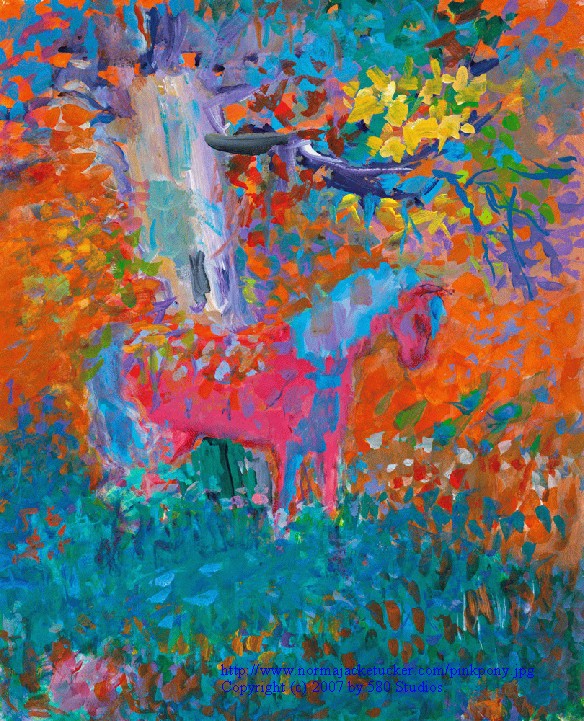
Her studio overflowed with paintings -- portraits, still lifes, scenes from her childhood, but also fantasies and impressions from her own vivid imagination.
She showed her paintings in numerous exhibitions. She designed and painted the sets for the Buffalo Ballet production of the Nutcracker at Kleinhans Music Hall. She gave her work away to family and friends, and sold paintings to large corporations and to celebrities like Johnny Cash and Harry Belafonte.
One of her drawings has been used for many years by the Italian Catholic community to wrap the special bread for the St. Anthony festival. Families all over Buffalo carefully smooth out the wrappers with Jacke's drawing of St. Anthony, framed them and hung them in places of honor in their homes.
Jacke reached out to literally hundreds of public school students. She bought art materials out of her own pocket to supplement what the school system provided. She organized art shows to highlight the talent of her students. She gave free lessons at home, and gave jobs to students from low-income families.
Through the house, over the years, flowed a steady stream of people -- art students, ballet dancers, opera singers, Chinese Christian students, refugees, people in need of homes. They became like family over a period of 40 years. She was generous with help, love and encouragement.
Jacke's daughter, Joyce Leacy Brown, with help from family and friends, is working to preserve and share Jacke's work, through the sale of our growing collection of high-quality art prints using archival materials. These are prints are already in the collection of non-profit organizations in Buffalo, and at the headquarters of the Michael J. Fox Foundation.
We also plan to offer a new collection of stories about Jacke's life and work, an edition of her scratchboard drawings, and prints of her daughter Joyce's drawings and paintings.
Copyright (c) 2009 by 580 Studios